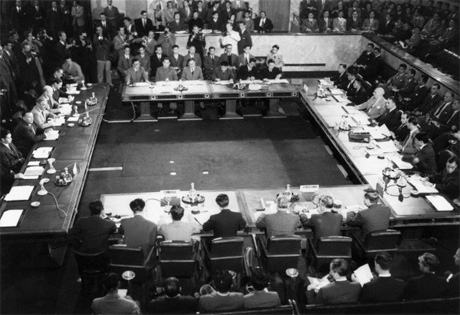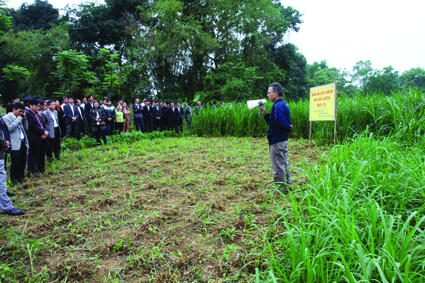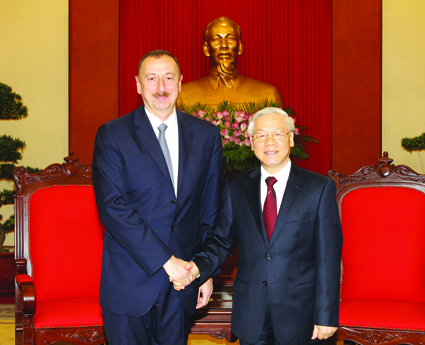Assoc. Prof., Dr. Hoang The Lien
Local administrations are prescribed in Articles 110 thru 116 of the 2013 Constitution. It can be seen that these articles retain a number of provisions of the 1992 Constitution (amended in 2001) while adding some open provisions aiming to push forward the ongoing hectic reform of the organization and operation of People’s Councils and People’s Committees. This article analyzes the contents and meaning of the 2013 Constitution’s provisions on local administrations.
1. The title of Chapter IX is changed into “Local administrations.”
People’s Councils and People’s Committees, or generally called local administrations, are bodies exercising state power in localities. Albeit their different positions and characteristics, People’s Councils and People’s Committees are organized and operate in the same locality and at the same administrative level. Therefore, they are closely related in terms of organization, function, task and power. The operational effectiveness and efficiency of a level of local administration largely rely on the combined operational effectiveness of these two bodies as a unity. In this spirit, the title of Chapter IX is changed into “Local administrations”. This change is far from nominal, but lays down a requirement to substantially renew the organizational model as well as functions, tasks and powers of local administrations toward ensuring closer ties between People’s Councils and People’s Committees; enhancing the autonomy and accountability of local administrations; and asserting more clearly the position of local administrations in the unified, properly functioning administrative system of a unitary state.

2. The provisions of Article 110 of the 2013 Constitution basically inherit those of Article 118 of the 1992 version, with reasonable additions. This aims to stabilize the system of administrative units while still meeting the country’s renewal requirements. Analysis of these provisions reveals the following noteworthy new points:
Firstly, the appearance of the term “administrative unit equivalent to” urban districts, rural districts and towns in centrally run cities indicates that the 2013 Constitution gives green light to the formation of new administrative units within centrally run cities, such as “cities” within “centrally run cities” as proposed by Ho Chi Minh City in its scheme on the pilot model of municipal administration. This open provision has been added to the Constitution on the basis of opinions of the Government and National Assembly deputies, especially those from Ho Chi Minh City. It helps increase the predictability and stability of the Constitution in responding to the objective demand of the socio-economic development process.
Secondly, the provision that “Special economic-administrative units shall be established by the National Assembly” is added. In fact, this issue was already provided in the 1992 Constitution in Clause 8, Article 84 on the competence of the National Assembly. This addition was proposed by National Assembly deputies, agencies, organizations (especially the Government) and localities in order to meet the urgent need for forming special economic-administrative units in a number of localities (such as Phu Quoc district in Kien Giang province and Van Don district in Quang Ninh province).
Thirdly, another noteworthy addition seen in Article 110 is the provision that “The establishment, dissolution, merger, separation and adjustment of boundaries of administrative units shall be consulted with the people and in accordance with the order and procedures prescribed by a law.” This provision requires the Government to urgently study, draft and submit to the National Assembly for passage a law on the order and procedures for establishment, dissolution, merger, separation and adjustment of boundaries of administrative units in which “consultation with local people” is a must. This new provision, which was proposed by the Government to the 1992 Constitution Revision Committee, aims to ensure the stability of administrative units and avoid the somehow arbitrary and groundless merger and separation of administrative units without public consultation as a decisive factor that has actually occurred in the past time.
3. The organizational model of local administrations is renovated to suit the urban and rural characteristics.
The 1992 Constitution provides that “The establishment of People’s Councils and People’s Committees in administrative units shall be prescribed by a law” (Article 118). To specify this provision, the laws on organization of People’s Councils and People’s Committees (1994 and 2003) state that People’s Councils and People’s Committees shall be organized in all administrative units. This organizational model has caused cumbersome apparatuses and overlapping functions and tasks between People’s Councils and People’s Committees at different levels and provided no distinction between local administrations in urban and rural areas. Being aware of this limitation, in 2008 the National Assembly adopted Resolution No. 26 on the pilot non-establishment of People’s Councils in urban districts, rural districts and wards in 10 provinces and centrally run cities.
In the process of revising the 1992 Constitution, due to the absence of a comprehensive review of the implementation of Resolution No. 26, the organizational model of local administrations was hotly debated. A majority of opinions agree on two principles: There must be administrations in administrative units and administrations must include People’s Councils and People’s Committees which are elected by People’s Councils of the same level. But if these two principles are to be adhered to, no renewal would be seen in local administrations. Meanwhile, renewal of the organizational model of local administrations is a very urgent requirement. In order to ensure the above two principles while still meeting the renewal requirements, two options are available. The first is to streamline administrative units. This option is hard to implement because the current administrative units have existed for ages with stable institutions, any change would result in huge work to be done. The second option is to re-determine administration levels to be less cumbersome and suitable to the urban and rural characteristics. This option is more reasonable. Therefore, Article 111 of the 2013 Constitution stipulates:
“1. Local administrations shall be organized in administrative units of the Socialist Republic of Vietnam.
2. Local administration levels composed of the People’s Council and People’s Committee shall be organized consistent with the characteristics of rural areas, urban areas, islands or special administrative-economic units prescribed by a law.”
This Article introduces a new concept of “local administration level.” This concept permits the clear distinction between the division of administrative units for management and the organizational model of administration in each administrative unit. Accordingly, there must be a local administration in every administrative unit but an administrative unit is not always an administration level. Administration levels shall be organized consistent with the characteristics of rural areas, urban areas, islands or special administrative-economic units. Where is regarded as an administration level, there will be an administration consisting of a People’s Council and a People’s Committee which is elected by the People’s Council. Where is not regarded as an administration level, there will be an administrative body to perform administrative management tasks and provide public services in the locality. So, Article 111 of the 2013 Constitution has new provisions on “local administration level” consisting of a People’s Council and a People’s Committee and which administrative units will have administration levels will be prescribed by a law to suit the “characteristics of rural areas, urban areas, islands and special administrative-economic units.” These provisions open up a possibility for designing a law to both remedy existing restraints and make an important stride in renovating the organization of local administrations.

4. The 2013 Constitution has separate provisions on local administrations in the capacity as a constitutional institution.
The 1992 Constitution has no provisions on the functions and tasks of local administrations but only stipulates the competence of People’s Councils and People’s Committees. The new Constitution adds a new article directly spelling out the functions and tasks of local administrations (Article 112). Accordingly, local administrations have two different types of tasks: (i) organizing and guaranteeing the enforcement of the Constitution and laws in localities and (ii) deciding on local affairs as prescribed by a law. In a unitary state like ours, the primary task of local administrations is to organize and guarantee the enforcement of the Constitution and laws in localities. At the same time, local administrations perform tasks originating from local peculiarities. These tasks are highly autonomous.
“The tasks and powers of local administrations shall be determined on the basis of determining the powers between state agencies at the central and local levels and for each level of local administration” (Clause 2, Article 112 of the 2013 Constitution). It can be said that this is an important orientation in designing a mechanism to regulate the relationship between central and local administrations (as well as between different local administration levels) in the coming time. Without a clear division of competence for each local administration level in the spirit of strong decentralization, the mechanism of determination of responsibilities and guaranty of the autonomy and accountability of each local administration level will bear no fruits. “Local administrations may, as necessary, be assigned certain tasks of state agencies at higher levels along with the necessary means to ensure the performance of those tasks” (Clause 3, Article 112 of the 2013 Constitution). In reality, the central level has assigned numerous tasks to localities without providing necessary conditions for performing these tasks, causing difficulties to localities. This provision serves as a constitutional basis for localities to address this concern.
Besides, the 2013 Constitution retains the basics of provisions of the 1992 Constitution (and its amendments of 2001) regarding the characteristics, roles, tasks and powers of People’s Councils and People’s Committees and People’s Council deputies as well as the relations between People’s Councils, People’s Committees and the Vietnam Fatherland Front. The difference is that the new provisions are more general and concise in order to ensure that the Constitution is the basic law of the country.
Apparently, the provisions of the 2013 Constitution on local administrations inherit many provisions of the 1992 version while opening up a direction for further renewing institutions on local administrations in the future. Our tasks ahead include:
- Continuing to review the pilot non-organization of People’s Councils in urban districts, rural districts and wards in the spirit of Resolution No. 26 of the National Assembly. On this basis and other researches, we will gain theoretical and practical grounds for identifying an organizational model of local administration in the new spirit.
- Urgently developing a Law on Local Administrations in the spirit of strong decentralization and enhancement of the autonomy and accountability of local administrations; and,
- Designing a Law on Administrative Units to clearly prescribe the conditions, order and procedures for establishment, dissolution and separation of boundaries of administrative units and affirm that consultation of local people is compulsory.-








